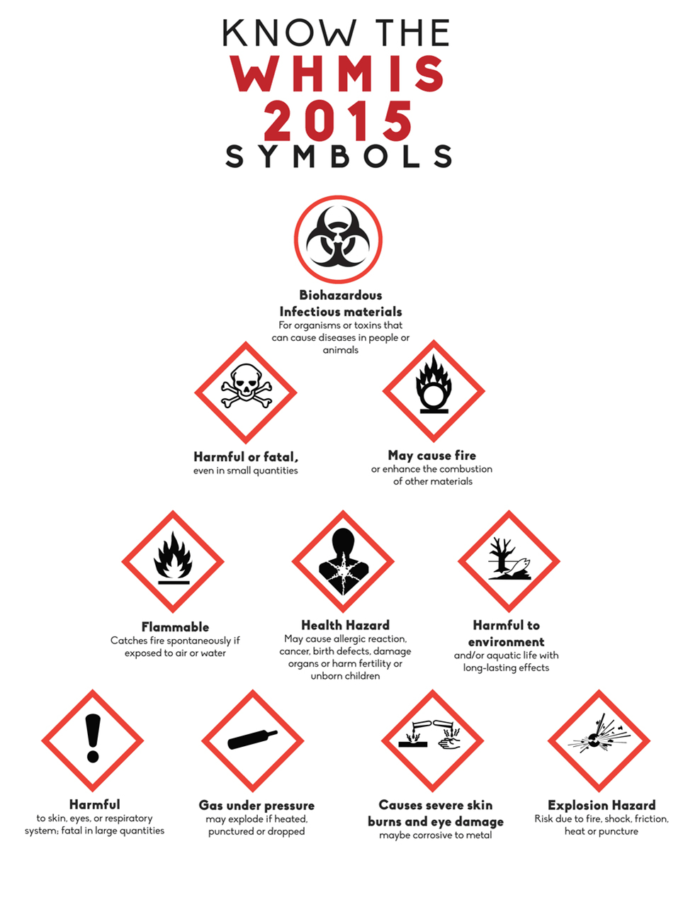
Do you know and recognize all the elements of WHMIS?
Key elements of WHMIS 2015
WHMIS 2015 divides hazardous products into two major hazard groups:
• Physical hazards
• Health hazards
GHS also defines an environmental hazards group. This group (and its classes) was not adopted in WHMIS 2015 since it is beyond the direct scope of WHMIS legislation (i.e., workplaces).
The physical and health hazard groups are split up into a number of classes. Some of the classes are divided even further into categories. The classes are depicted by pictograms (symbols surrounded by red, diamond-shaped borders) that identify their specific hazards. (For more information on classification, see page 16.) After a hazardous product has been classified, the following two WHMIS elements are used to communicate health and safety information:
WHMIS labels
Labels on hazardous products alert workers to the identities of the products, their hazards, and precautions to be taken. Under WHMIS 2015, these labels must display some elements in a certain order. The wording of the hazards has been standardized.
Safety data sheets (SDSs)
These technical bulletins provide detailed hazard and precautionary information. Under WHMIS 2015, SDSs use a 16-section format. The information required in each section has been standardized.
WHMIS education and training programs
Employers provide education and training for workers so that they can work safely with and near hazardous products. Workers need to know how WHMIS works, the hazards of hazardous products in their workplaces, and the safe work procedures they must follow.
Key changes from WHMIS 1988 to WHMIS 2015 include the following:
• Hazard classification criteria are more comprehensive. This improves the ability to indicate the severity of hazards.
• New hazard classes are included (for example, “Aspiration hazard”).
• Physical hazard criteria are consistent with the Transportation of Dangerous Goods (TDG) Regulations.
• The language has been standardized.
• Supplier labels have a few new requirements (for example, the use of prescribed signal words, hazard statements, pictograms, and precautionary statements).
• SDSs follow a standard 16-section format with specific information requirements.
Did you know that Diversified Staffing offers FREE WHMIS 2015 Training & Certification? Stop by one of our offices today to get certified!
